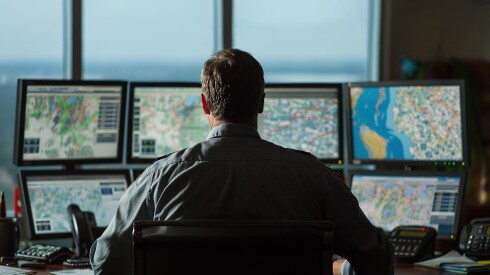Justice and Public Safety
-
When residents of a ritzy West Los Angeles neighborhood experienced an increase in burglaries last year, they decided to invest in technology for the police department to fight the problem.
-
The city of around 25,000 will deploy 16 cameras to be used in open cases or other specific circumstances, such as finding suspects or missing children. A grant will fund about two-thirds of the devices.
-
Public safety agencies are using drones to provide up-to-the-minute overhead coverage for officers on the ground. Police in Dunwoody, Ga., have used them to track suspects and find incident locations.
More Stories
-
Legislation headed to the state Senate floor would let police statewide use drones to respond to 911 calls in progress, at crash scenes ahead of arriving officers and to chase fleeing suspects.
-
BRINC and SkySafe will work with the tech giant to provide better drone operations for first responders, reflecting a larger trend in government. BRINC also says it has raised $75 million in a new funding round.
-
An eight-month pilot program resulted in law enforcement recovering about 170 cars and arresting nearly 300 people, and it helped solve homicides, robberies and hit-and-runs, according to police.
-
Robots offer potential for public safety, but state governments — working with a big name in robotics — are grappling with how to regulate them, especially as the prospect of weaponization raises urgent concerns.
-
Drones are quickly taking on more roles in law enforcement, disaster management and other tasks. Their latest role is arriving at emergency situations before humans do, collecting information for police.
-
Moving to Next-Gen 911 is more than just a technical challenge; it's a moral imperative as public safety agencies work to meet the needs of all Americans, including those with disabilities or language barriers, during emergencies.
-
WaveAerospace is building drones to fly in weather that others cannot, including heavy winds, precipitation or even icing conditions by redistributing waste heat produced by onboard systems.
-
Gov. Mike DeWine’s multibillion-dollar transportation budget, which he signed late Monday, will bar counties and townships from operating traffic camera programs. A 2015 law closely regulated their use for ticketing.
-
Distracted driving is so pervasive in the Minneapolis area that law enforcement is turning to artificial intelligence cameras to spot motorists who are illegally using their phones while behind the wheel.
-
Since 2019, the Traverse City Police Department has spent $28,000 to purchase tech tools to help officers identify unknown substances and intoxication levels, including one TruNarc device.
-
While artificial intelligence and SaaS may sometimes seem like buzzwords, they're necessities for court systems that want to continue to provide accessible and efficient judicial services.
-
Minnesota wants widespread roadside drug testing, but pilot data reveals key limitations and practicality concerns agencies must consider. Government Technology broke down the data within "spit" test discrepancies.
-
The Oceanside Police Department has been offered grant money for a 13-month trial of new first responder drones that can soar from a downtown rooftop within seconds of a 911 call.
-
Yuba City and Marysville would participate with Yuba and Sutter counties in joining an integrated public safety information system. The endeavor is contingent on the former county securing a $2.6 million federal grant.
-
The City Council signed off recently on spending $240,000 for 32 automatic license plate reader cameras, and three surveillance cameras. Two members did, however, express concerns about privacy and surveillance.
-
The project is nearing completion, with training on the new court management system slated to begin this spring. Paid for entirely by federal funds, it will eventually allow for electronic filing of court documents.
-
As dozens of other states have moved their own court records online, Maine still largely remains in the world of paper files, even though the state has spent more than $17 million trying to catch up.
-
The Cedar Rapids Police Department recently finished installing stationary license plate reader cameras, which scan plates and run them through national crime databases.
Most Read



























